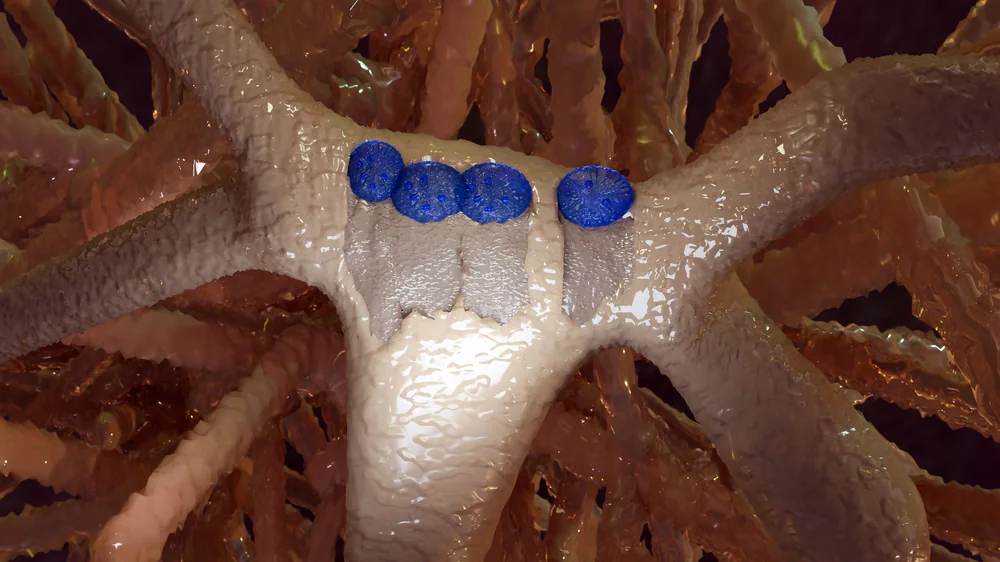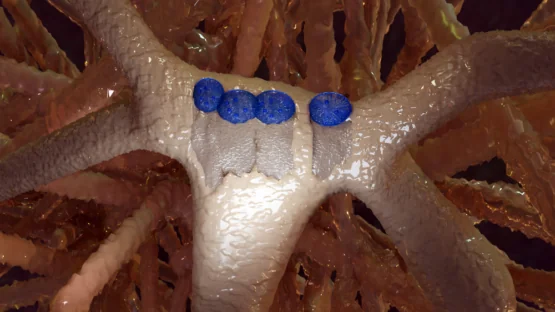Researchers publishing in Aging have uncovered some of the molecular mechanisms behind why mesenchymal stem cells (MSCs) do and don’t differentiate into bone-building osteoblasts, unlocking a potential new approach to osteoporosis.
A matter of cellular fate
MSCs are downstream of pluripotent stem cells: they can differentiate into multiple cell types, but not every somatic cell in the body. MSCs’ potential somatic cell fates include cartilage cells (chondrocytes), fat cells (adipocytes), and, germane to this study, osteoblasts: the cells that are responsible for building bone.
Previous research has found that MSCs differentiating into too many adipocytes and not enough osteoblasts is a key part of osteoporosis [1], and many of the gene expression and protein networks have already been extensively explored [2]. This focus on proteomics has yielded many valuable insights into MSCs’ behavior [3]. However, the technologies used in these studies did not fully describe the early stages of differentiation, and the many proteins involved in the differentiation process have not been entirely described.
Screening a very broad protein base
To further investigate proteins during differentiation, these researchers used Tandem Mass Tags (TMT), a process that used reflective spectra to identify 609,196 secondary proteins and screen 96,006 peptides. Only 6,543 of the proteins were informative, and of those, only a few hundred were found to significantly change during the differentiation process at 3 or 7 days.
For bone cells, the proteins that were upregulated were focused on cellular adhesion and the extracellular matrix, while for fat cells, the upregulated proteins were related to metabolism and PPAR, a known pathway that fat cells use. The Western blot, a very old method of protein analysis, was used to verify these findings with four random proteins from each cell type, and they were found to be accurate.
Two proteins in focus
Two proteins stood out as being of particular interest: FBLN2 and NPR3. FBLN2 has been previously described in the literature as being related to the extracellular matrix and bone formation [4] and is well-known for being strongly expressed in osteoblasts [5]. Using silencing RNA to knock out this protein in MSCs reduced their ability to build bone by nearly 60%. The downstream effects of this silencing had effects on over a thousand, generally scattered, proteins.
Knocking out NPR3 in the same way reduced osteogenesis by 65%. This protein has been discussed more in the context of the cardiovascular system than osteogenesis [6]. While an excess of this protein’s pathway has been previously linked to harmful overgrowth of bone [7], no other research had previously connected its lack to osteoporosis. A relatively large number of NPR3’s downstream effects were found to be related to metabolism.
Enlightening, but incomplete
This is a cellular and proteomic study rather than an animal study. While very valuable for future research, it does not answer, nor attempt to answer, what might cause FBLN2 or NPR3 to be less expressed. However, its novel findings open up an entirely new avenue into preclinical studies that might pave the way towards fundamental osteoporosis treatments that treat this crippling disease at its root.
Literature
[1] Pino, A. M., Rosen, C. J., & Rodríguez, J. P. (2012). In osteoporosis, differentiation of mesenchymal stem cells (MSCs) improves bone marrow adipogenesis. Biological research, 45(3), 279-287.
[2] Kasoju, N., Wang, H., Zhang, B., George, J., Gao, S., Triffitt, J. T., … & Ye, H. (2017). Transcriptomics of human multipotent mesenchymal stromal cells: retrospective analysis and future prospects. Biotechnology Advances, 35(4), 407-418.
[3] Moravcikova, E., Meyer, E. M., Corselli, M., Donnenberg, V. S., & Donnenberg, A. D. (2018). Proteomic profiling of native unpassaged and culture‐expanded mesenchymal stromal cells (MSC). Cytometry Part A, 93(9), 894-904.
[4] Bardai, G., Lemyre, E., Moffatt, P., Palomo, T., Glorieux, F. H., Tung, J., … & Rauch, F. (2016). Osteogenesis imperfecta type I caused by COL1A1 deletions. Calcified tissue international, 98, 76-84.
[5] Hergeth, S. P., Aicher, W. K., Essl, M., Schreiber, T. D., Sasaki, T., & Klein, G. (2008). Characterization and functional analysis of osteoblast-derived fibulins in the human hematopoietic stem cell niche. Experimental hematology, 36(8), 1022-1034.
[6] Pandey, K. N. (2005). Biology of natriuretic peptides and their receptors. Peptides, 26(6), 901-932.
[7] Hisado-Oliva, A., Ruzafa-Martin, A., Sentchordi, L., Funari, M. F., Bezanilla-López, C., Alonso-Bernáldez, M., … & Heath, K. E. (2018). Mutations in C-natriuretic peptide (NPPC): a novel cause of autosomal dominant short stature. Genetics in Medicine, 20(1), 91-97.




